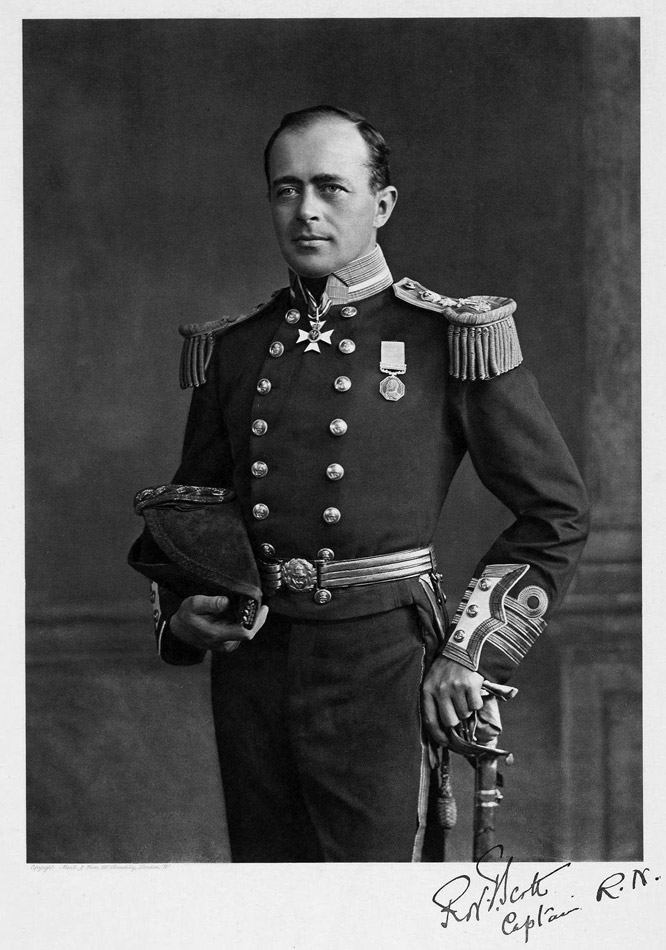Captain Robert Falcon Scott
The The British National
Antarctic, or Discovery Expedition 1901-1904
crew of the Discovery
| Who was
Robert Scott? presentation
Early life and first expedition. "Scott of the Antarctic" is one of the most famous of all the Polar explorers. Best known for his legendary and fatal attempt to reach the South Pole, doing so a month after Norwegian Roald Amundsen and his party. This page is concerned with the earlier expedition where he first made his polar reputation.
Robert Falcon Scott was born into a reasonably well to do family in Devon, England in 1868. There was a tradition of seafaring on both his mothers and fathers sides of the family and he first went to sea at the age of 13 years old. He learnt his trade well and progressed through the ranks of the Royal Navy.
He met by chance a geographer called Clements Markham, while on Naval duty in the West Indies. Markham was impressed by Scott's intelligence, enthusiasm and charm and wrote "My final conclusion was that Scott was the destined man to command the Antarctic Expedition".
Scott later met Clements Markham once again. While home on leave in June, 1899; "Chancing one day to be walking down the Buckingham Palace Road, I espied Sir Clements Markham and accompanied him to his house. That afternoon I learned for the first time that there was such a thing as a prospective Antarctic Expedition; two days later I wrote applying to command it".
"I may as well confess that I had no predilection
for polar exploration".
The Voyage of the Discovery
- Robert Scott
After 18 years in the Navy Scott was beginning to feel rather restless and wanted to expand his horizons. He was chosen as leader of a joint Royal Society and Royal Geographical Society Antarctic expedition, receiving news of this appointment in 1900. This was to become the "Discovery Expedition" of 1901 - 1904
The British National Antarctic or Discovery Expedition 1901 - 1904
The ship "Discovery" was built especially for this expedition, a wooden sailing ship with auxiliary engines. She was 172 feet long, 34 feet wide and was 485 tons unladed. She left Dundee where she had been built on July 31st 1901 sailing south to Antarctica.
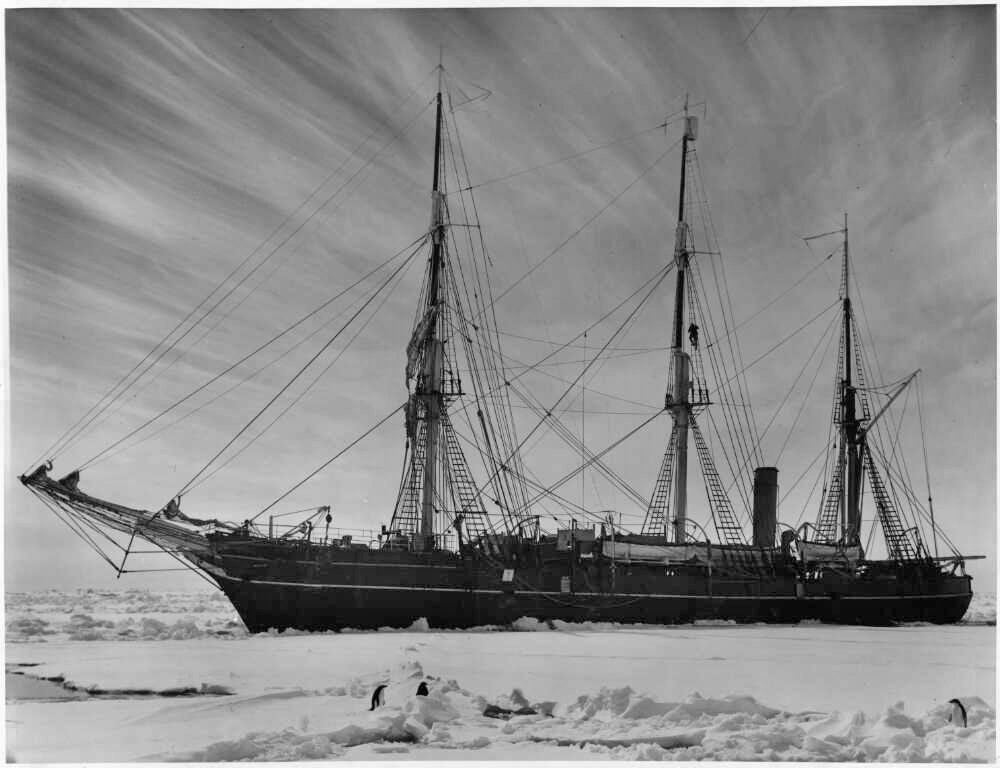 "There's
wind in the sky" the Discovery held up in congested pack
ice off MacRobertson Land Antarctica. The sky is over clouded
by the characteristic "Cirrus Radiant" which precedes
a blizzard.
"There's
wind in the sky" the Discovery held up in congested pack
ice off MacRobertson Land Antarctica. The sky is over clouded
by the characteristic "Cirrus Radiant" which precedes
a blizzard.
Amongst the crew on this expedition was Ernest Shackleton engaged as third lieutenant in charge of holds, stores, provisions and deep sea water analysis.
On reaching Antarctica and after some initial explorations along the coast, the Discovery made its way to McMurdo sound where winter quarters were to be established. Many trips were made by manhaul and dog sledge parties in the remaining months before winter darkness fell. Scott and his men engaged on a very steep and uncomfortable learning curve in an unforgiving environment, a "school of hard knocks" and cold knocks too.
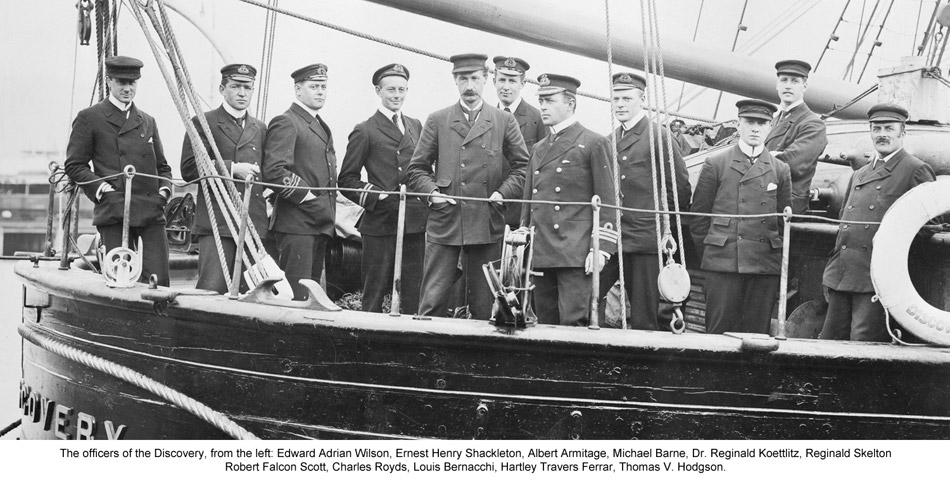
The officers of the Discovery
From the left: Edward Adrian Wilson, Ernest Henry Shackleton,
Albert Armitage, Michael Barne, Dr. Reginald Koettlitz, Reginald
Skelton, Robert Falcon Scott, Charles Royds, Louis Bernacchi,
Hartley Travers Ferrar, Thomas V. Hodgson.
The expedition was made of many "projects" both scientific and exploratory performed by various combinations of the personnel. The centerpiece of the expedition was an attempt to reach the South Pole or at least to explore further South than anyone had managed to do previously. The core party was of Scott, Wilson and Shackleton supported by others who were to lay food and supply depots for the team to use particularly on the return journey. In this way the men would only need to carry enough supplies as to last them as long as the next depot rather than for the whole outward and return journeys.
 Mount
Erebus and the Discovery
Mount
Erebus and the Discovery
Though the party had dogs, they were not experienced in using them, the food brought for the dogs was incorrect and had gone bad. When the dogs began to get lame, and weak through the rigours of the environment and lack of food, instead of killing them and depoting the meat, the party pressed on with the dogs running behind as they became too weak to pull the sledge.
In addition to this, Shackleton began to suffer from the effects of scurvy and all of the men were suffering from a lack of food. Wilson, the doctor suffered from snow blindness and at one point hauled his sledge blindfolded to ease the pain caused by light. They turned back on December 31st 1902 having reached 82°17'S. They had travelled 300 miles farther south than anyone before them and were only 480 statute miles from the Pole. It took them just over another month before they reached their base again, as Scott put it "We are as near spent as three persons can be". They had been gone for ninety-three days and had covered 960 statute miles.
The expedition however continued. A support ship the "Morning" had arrived from New Zealand to bring extra supplies and exchange some of the personnel including Shackleton who was still recovering from the effects of scurvy. The Morning left again on March 1st 1903 leaving the party to another Antarctic winter and to carry on their scientific and exploratory work.
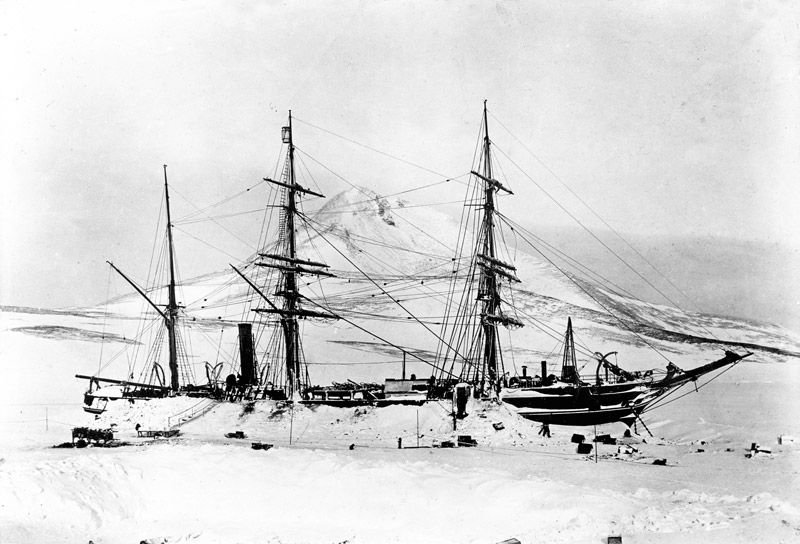
The Discovery
frozen into offshore ice during the winter, Antarctica.
The "Morning" returned in 1904 this time accompanied by another ship the "Terra Nova". The government in England had decided that the Antarctic party might be having too good a time of it, relieved once a year by a hugely expensive relief ship and wanted them all brought back whether or not the Discovery had to be abandoned in the process.
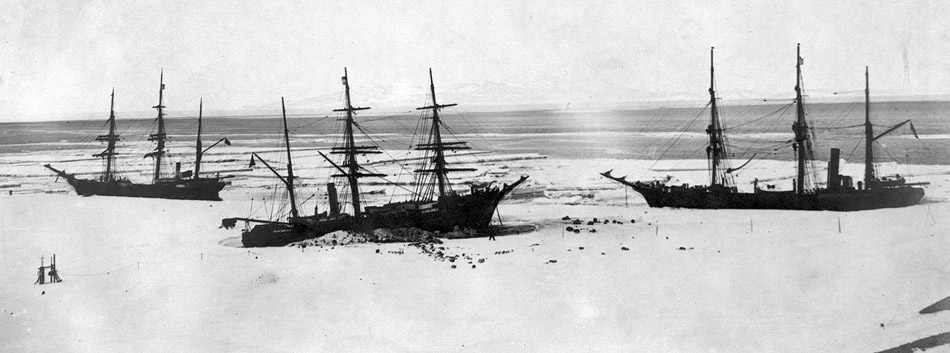
The still iced in Discovery with the Morning
and Terra Nova sent to rescue her and her crew, it took seven
weeks to break through 18 miles of ice to reach her.
For a while it looked like the Discovery might well be abandoned as there was 18 miles of ice between it and open water. With much hard work, explosives, the wind eventually in the right direction and finally the two relief ships breaking their way through the remaining ice, the Discovery was released and all three ships were under way heading back north.
By early 1907 , Scott had made up his mind to lead
a second expedition to the Antarctic.
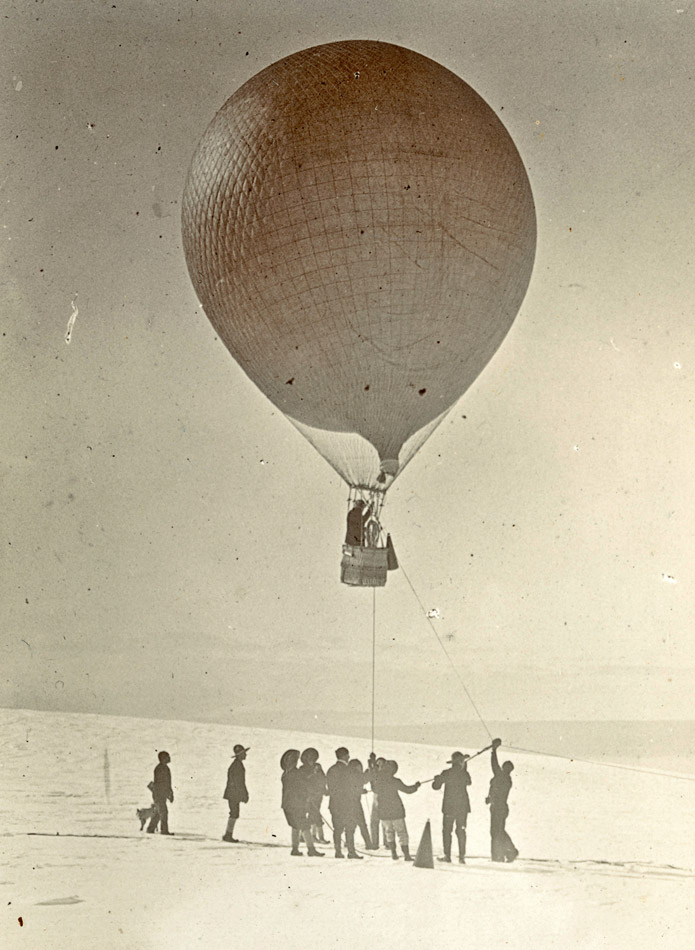
Feb 4th 1902 - Captain Scott ascends to 600 feet
in a hydrogen balloon named Eva, the first ever flight in Antarctica.
RRS Discovery and Discovery Hut
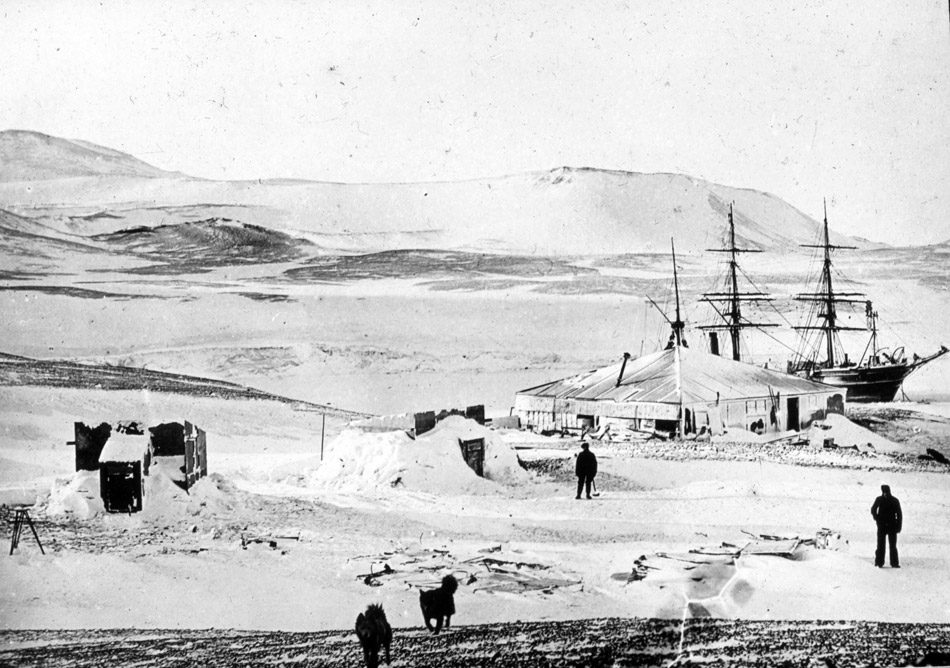 RRS Discovery and Discovery Hut
RRS Discovery and Discovery Hut
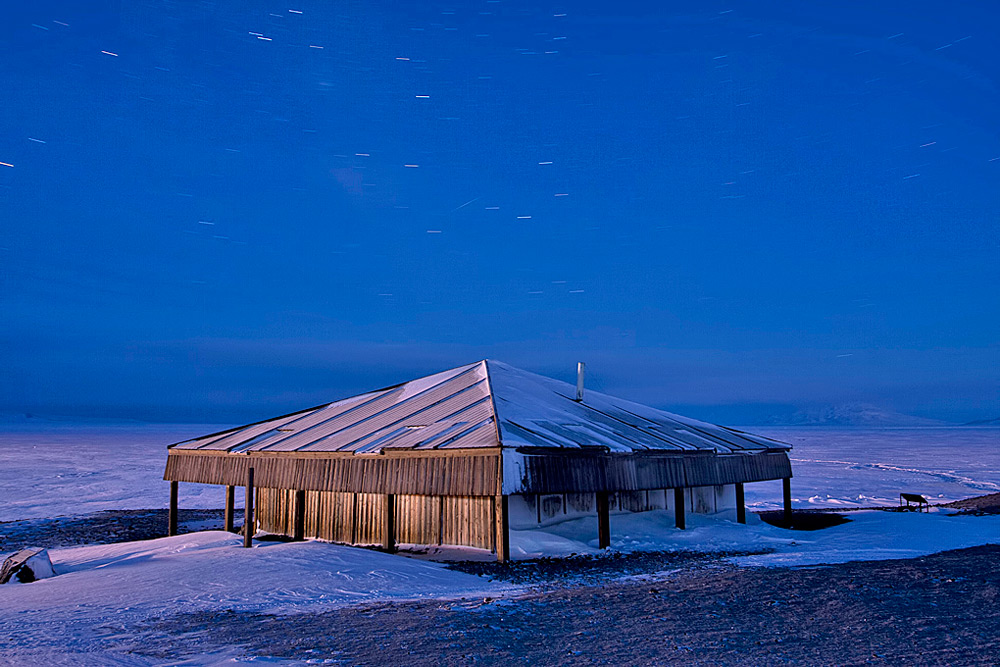 Scott's
Discovery hut still stands in McMurdo Sound, pictured here in
2011
Scott's
Discovery hut still stands in McMurdo Sound, pictured here in
2011
 The
Discovery in 2012 in Dundee
The
Discovery in 2012 in Dundee
where she is on permanent
public
display
Scott's second Antarctic expedition, Terra Nova and the South Pole
Robert Falcon Scott Books and Video

The Coldest March: Scott's Fatal Antarctic Expedition
by Susan Solomon
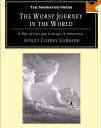
The Worst Journey in the World. Apsley Cherry-Garrard

The Voyage of the Discovery: Scott's First Antarctic Expedition
by Robert Falcon Scott, Ross MacPhee (Introduction), Fridtjof Nansen (Preface)

The Great White South: Travelling with Robert F. Scott's Doomed
South Pole Expedition by Herbert Ponting

Scott's Last Expedition: The Journals of Captain R.F.Scott

Edward Wilson's Antarctic Notebooks
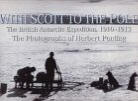
With Scott to the Pole
Herbert Ponting, illustrated

Discovery Illustrated: Pictures from Captain Scott's First Antarctic Expedition

Captain Scott by Sir Ranulph Fiennes

90 Degrees South: With Scott to the Antarctic (1933) DVD

History Chapters: Roald Amundsen and Robert Scott Race to the South Pole. Ages 4-8

Diary of the "Terra Nova" Expedition to the Antarctic, 1910-12
Picture credits, copyright pictures used by permission:
2012 Discovery - Julian Nitzsche / Discovery hut 2011 - Mounterebus,
used under Creative Commons Share and Share Alike 3.0 Unported licenses.
Other pictures from "Photographs relating to Antarctica and mountaineering.
Alexander Turnbull Library, Wellington, New Zealand.
http://natlib.govt.nz

